Final Report for YENC15-094
Project Information
(1) Soil Health Proposed Narrative: In the Soil Health lesson students will learn the function and importance of cover-crops, plant cover crop seed, develop a crop rotation plan, and determine which cover crops will be used in fall. Students will see how the cover crops improve their soil health by testing their soil at the beginning and end of the season. Students will learn about Vermicomposting and build their own worm farm.
Completed:
- Education Coordinator further developed Lesson One: I Love Dirt (file is attached).
- In Fall 2015 10 education gardens in Omaha were planted with cover crop, primarily oats, field peas, vetch and buckwheat.
- In Fall 2015 a free workshop on using cover crops in the garden was taught by a local farmer (Tyler Magnuson of Botna Burrow) in an education garden in Omaha. There were 10 participants.
- Cover crop seed (from Green Cover Seed in Nebraska) was made available for all Big Garden Nebraska & Southwest Iowa sites, and handed out to approximately 20 gardens.
- In February & April 2015 two free and open to the public Composting & Vermicomposting at Home workshops were taught.
- In May 2015 cover crop seed was turned into gardens. There was a notable difference in soil health at various sites that used cover crop (Completely Kids, Kellom Educare, South Omaha YMCA, J.C. Wade, Indian Hill Educare).
- In June 2016 we started the Grow-Your-Own Summer Garden Program on June 1st. Our first lesson I Love Soil was taught at 26 different education gardens the week of June 1st through June 8th reaching 600+ children and youth ages 2.5 to 18.
- In June 2016 we built 10 new vermicompost bins with help from some of our participants. These bins were given out to education gardens to use during the summer.
- In September - November 2016 all education gardens were planted out with cover crops.
- In September 2016 The Big Garden offered a free to the public Cover Crops for Soil Health workshop with 20 attendees. 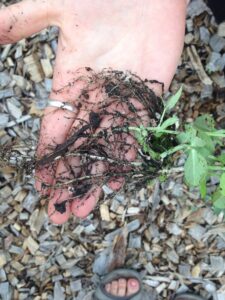
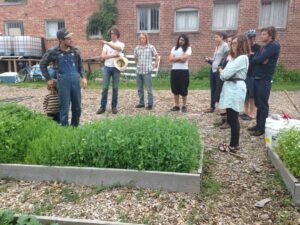

Cover Crops Workshops & Cover Crop Seed Mixing
(2) Permaculture Proposed Narrative: In the Permaculture lesson students will learn about annuals and perennials and permaculture design. They will develop a space at the garden dedicated to edible perennials and native plants. Students will plant the milkweed in 2015 because of its important relationship with monarch butterflies, as well as other pollinators. We will also discuss Colony Collapse Disorder (CCD) and what steps can be taken at the garden to protect honeybees.
Completed:
- Education Coordinator expanded the activities and information in Permaculture Principles & Bugs & Bees lessons which emphasize native plants and pollinators.
- In Summer 2015 The Big Garden Interns introduced participants in the Grow-Your-Own Summer Program to local honey.
- In Summer 2016 The Big Garden purchased 200 native perennial plants to attract pollinators.
- In Summer 2016 The Big Garden Education Coordinator & Interns designed and installed 4 new herb spirals (The Hope Center, South Omaha YMCA, Fontanelle Elementary, Element Learning Center, and Completely Kids) and 6 new pollinator patches (The Hope Center, South Omaha YMCA, Completely Kids, Indian Hill Educare, Kellom Educare, and Fontanelle Elementary) at our education gardens.
- In Summer 2016 the Grow-Your-Own program taught participants about the importance of pollinators and about colony collapse disorder.
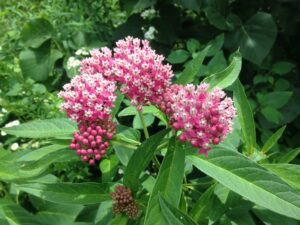
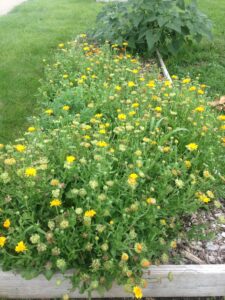
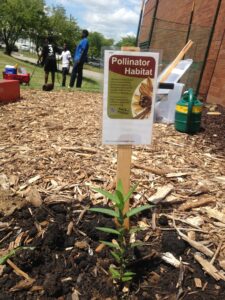
Pollinator Plants - Milkweed, Calendula, Pollinator Strip with Signage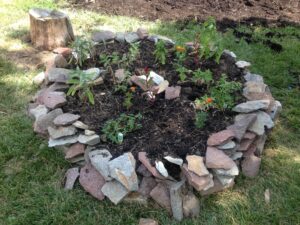
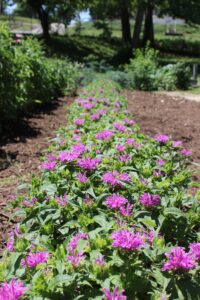
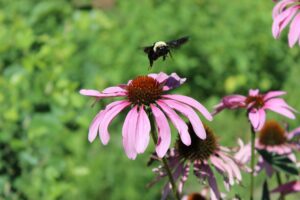
Herb Spiral and Bee Balm Pollinator Strip
(3) Seed Saving Proposed Narrative: In the Seed Saving lesson students will learn about Common Soil (the Omaha Seed Library) and Seed Savers Exchange, the importance of saving seed, learn the terms heirloom and open-pollinated, and discuss problems associated with not being able to save our seed. Common Soil Seed Library will provide The Big Garden seeds to grow for the seed library. Each garden site will grow 6 tomato plants for the seed library as well as lettuce seed. Students will play a seed ID game, build their own seed screens, learn dry processing and wet processing, threshing and winnowing, and seed storing techniques.
Completed:
- In Spring 2015 Education Coordinator developed the Seed Saving lesson in the Grow-Your-Own curriculum.
- In Summer 2015 two education gardens participated in producing seeds to save at their garden, and 20 education gardens covered the seed saving lesson in the curriculum.
- In Spring 2016 The Big Garden participated in Common Soil Seed Share and donated seeds to the local seed library, Big Garden also held its own Seed Share with over 70 participants.
- In Summer 2016 seed processing screens were purchased for seed saving.
- In Summer 2016 with the seed screens purchased through this grant our staff and gardeners saved hundreds of seeds from the following crops; glass jem corn, peas, beans, zinnias, marigolds, lettuce, calendula, yarrow, echinacea/purple coneflower, bee balm, dill, chives and garlic chives, hyssop, and various tomato varieties.
- In Fall 2016 three free open-to-the-public workshops were taught at the Big Garden Campus on Seed Saving. We covered both wet and dry processing.
- In Fall 2016 all education gardens saved seed. We saved peas, beans
- In February 2016 The Big Garden hosted a "Seed Saver's Potluck" to raise awareness and share information about saving seeds from the garden, 30 were in attendance. We also hosted our Third Annual Seed Share with over 150 gardeners in attendance.
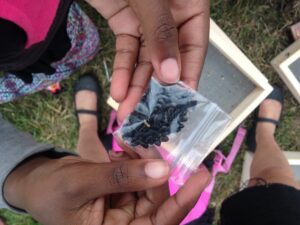
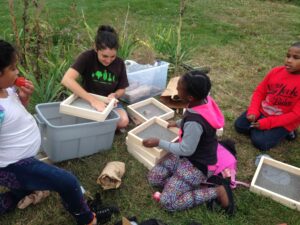
Saving & Labeling seeds with our new seed screens! These screens have allowed us to teach hundreds of children, youth and adults how to save seeds.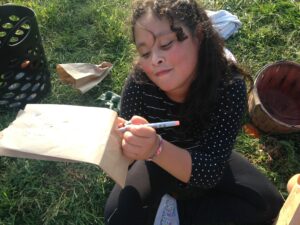
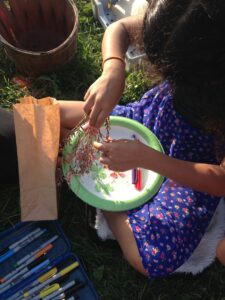
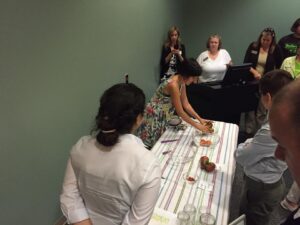
Teaching tomato seed saving
(4) Extending the Growing Season Proposed Narrative: In the Extending the Growing Season lesson students will build their own low-hoops and cold frames. Cold-hearty annuals will be selected for planting in the cold frames in the fall.
Completed:
- In Fall 2015 one cold frame was built.
- In Fall 2016 Education Coordinator purchased row cover and hoops for season extension.
- In Fall 2016 we installed two cold frames at two school gardens and extended the season growing spinach and lettuce. We harvested spinach from fall through the first week of February 2017!
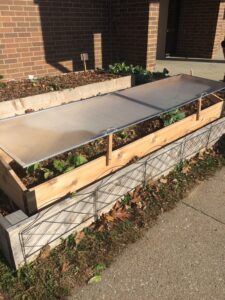
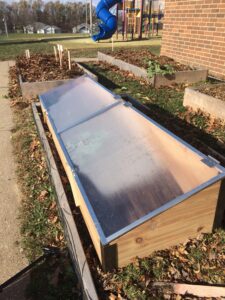
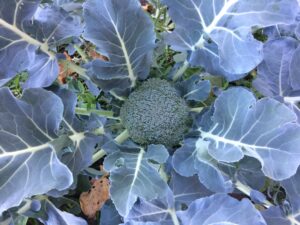
Cold frames and Fall Broccoli
(5) Farm to Table Proposed Narrative: In the Farm to Table lesson students will discuss the importance of growing their own food and supporting local farmers through games and activities. They will meet a local farmer who will share the sustainable practices they use on their farm, discuss why they use these practices, and bring samples of products from their farm for students to try.
Completed:
- In Summer 2015 8 education gardens had visits from local farmers including: Old Tree Farm, New Earth Farm & Goods, Botna Burrow, Big Muddy Urban Farm, Heartland Organics, Doe's & Diva's Dairy.
- In Summer 2016 26 education gardens had visits from local farmers, every farmer brought products to sample and some even brought creatures from the farm (chickens, pigs, guinea pigs, worms).
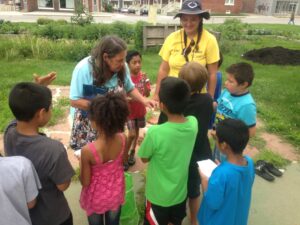
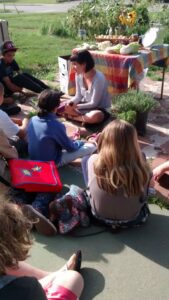
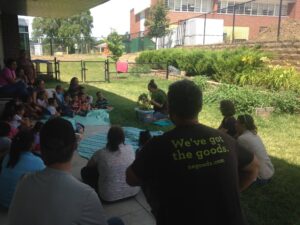
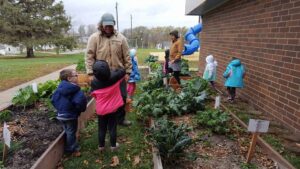
Farmer Visits at various gardens!
Information Products
- The Big Garden GROW YOUR OWN Introduction and Lesson One I LOVE DIRT
- The Big Garden GROW YOUR OWN Sustainable Agriculture Curriculum for Children Youth Lesson Four Garden Companions Permaculture Principles
- The Big Garden GROW YOUR OWN Sustainable Agriculture Curriculum for Children Youth Lesson Six Farm to Table Local Food Farmer Visit